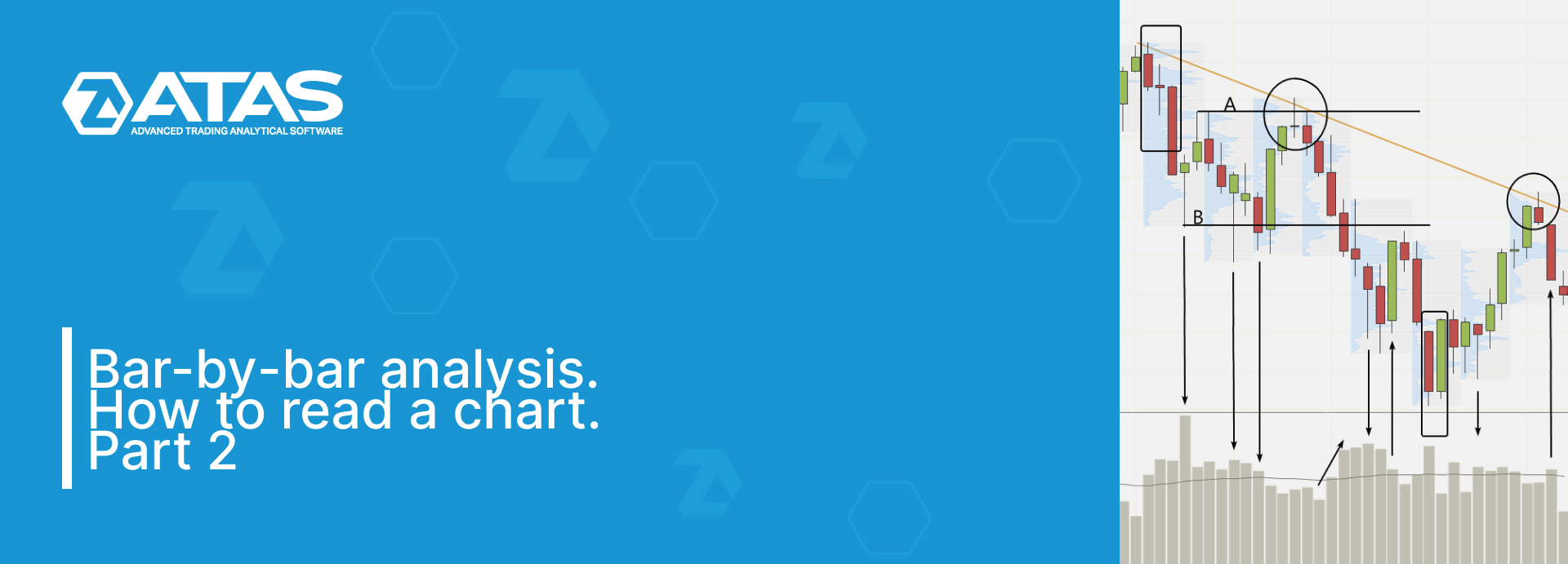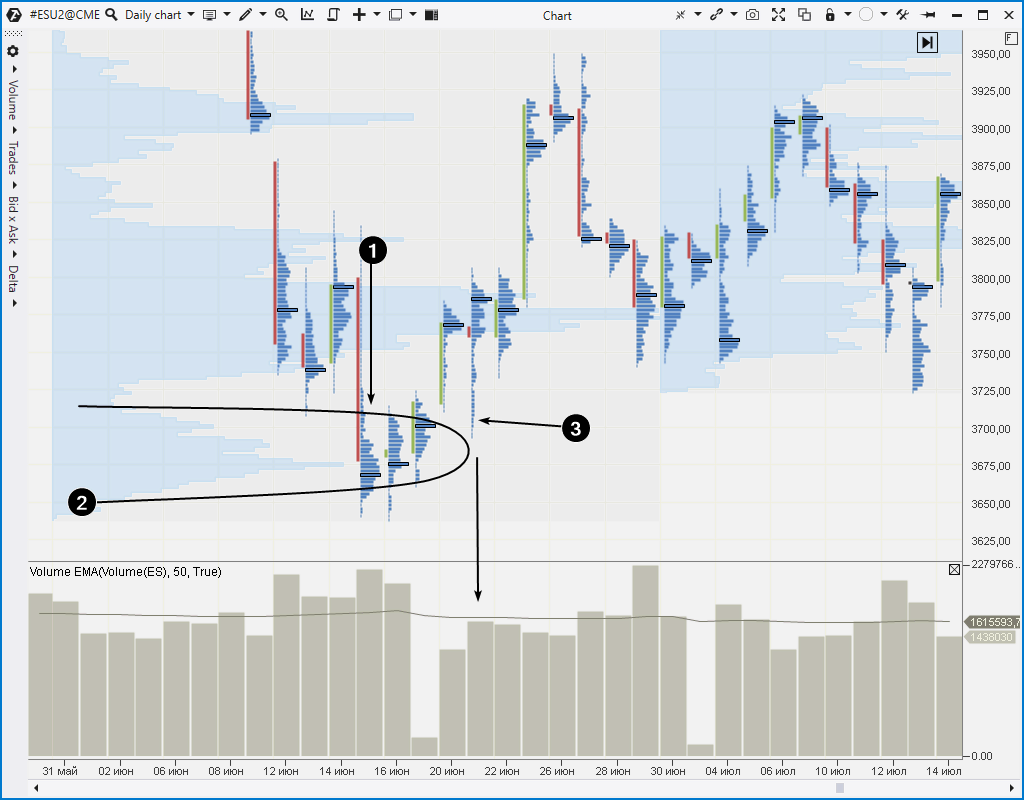Number 1 indicates three bearish candles – the year started in a negative way for the stock market. According to the statistics, it was one of the worst Januarys in the history of the stock market. Growth of volumes (but not extreme) amid price decrease in bar-by-bar analysis means selling pressure.
Number 2 indicates an extreme spike in volumes on a candle with a long lower shadow. This can be interpreted as the appearance of buyers. They decided to take advantage of panic that broke out as futures declined under the lows of the fall of 2021. According to buyers, the market could provide an opportunity to sell contracts at a higher price later.
Having the selling pressure (number 1) and the appeared buyers (number 2), we can assume that the market will achieve some balance (AB range). Such consolidations with false breakouts usually form after a sharp spike in activity (in this example, a sharp decline in January 2021).
Number 3 indicates another activity of buyers who pushed the price up, it means that demand is present only near level B.
Number 4 indicates a bearish candle with exhausting volume. Selling pressure is insignificant, which increases the likelihood of an upward impulse (it happens on the next candle).
Low trading volumes (5) near the upper limit of the AB range can be interpreted as market indecision. The rise to level A is approximately equal to 50% of the decline from the high to level B. Rising prices cooled buyers’ willingness to pay for contracts. The subsequent decline on growing volumes (6) confirmed the dominance of sellers.
When the price declines to the support level on growing volumes, it is a sign that the support level will be broken. After pushing the market through the support at level B, sellers met the activity of buyers around 3675, it is indicated by a candle with a long lower shadow and high volume marked with number 7. It is followed by a bearish candle which probably reflects the weakening of the selling pressure – we can see a false bearish breakout about the low of candle 7.
Buyers decided to take advantage of the fact that sellers’ activity was exhausted – a bullish candle (8) appeared on the chart. But the next narrow candle with low volume shows another period of indecision (a similar one was marked with number 5). A bearish exit on rising volumes from a period of indecision suggests that the market will reach a new low.
Very large volume is recorded on a bearish candle 9. At first glance it may indicate sellers’ pressure but if sellers controlled the market, why did the next candle close higher? A bullish engulfing pattern, where the bearish candle has high volume, suggests that major traders used the situation to buy back the panic. Apparently they assumed (using insider information?) that the market could recover during the corporate reporting period.
Number 10 indicates a candle which has a “bear trap” at its low. Similar traps often form at the very beginning of a bullish impulse.
Strong corporate reports raised the value of the S&P-500 index stocks. Optimism returned to the market and to the media headlines. But low volumes (11) indicate a new period of indecision, and a bearish way out of it is if sellers take the initiative.
When reading a weekly chart bar-by-bar, the situation may not always be obvious. But the more you practice on history, the more ideas you will have about what position to take at one point or another. Cluster charts and useful indicators of the ATAS platform will help you by providing more detail.
For example:






